
There are two places where we can count on finding African Americans in U.S. history textbooks: in discussions of Reconstruction and in the Civil Rights Movement of the 1950s. In the ninety-odd years that elapsed between the two events, black Americans rarely appear, save perhaps in the 1920s and 1930s, with a mention of the Great Migration or the cultural history of the Harlem Renaissance. In this simplified story, the heroes of the Civil Rights Movement arose directly from the ashes of slavery to challenge the South’s long-undisturbed system of racial oppression after World War II.

In reality, African Americans emerged from Reconstruction in the 1870s with the protection of the Thirteenth, Fourteenth, and Fifteenth Amendments, and took their places as free and increasingly successful citizens in the 1880s. Because more than 80% of the nation’s African Americans lived in former slave states until well into the twentieth century, they had to exercise their new citizenship rights among ex-Confederates and their sons and daughters. During the 1880s in the South, African Americans continued to vote, serve on juries, be elected to public office, pursue education, and improve their economic status. Some white leaders accepted the outcome of losing the Civil War and the enfranchisement of the Freedpeople. One white man in Virginia commented in 1885, “Nobody here objects to sitting in political conventions with Negroes. Nobody here objects to serving on juries with Negroes. No lawyer objects to practicing law in court where Negro lawyers practice. In both branches of the Virginia legislature, Negroes sit, as they have a right to sit.”1
Although textbooks tend to portray the history of African Americans as if not much happened between 1870 and 1954, the period was actually a long war for civil rights. White southerners continually reinvented new ways to impose white supremacy on their black neighbors. Black southerners fought back against disfranchisement and unequal treatment, the imposition of segregation, and the violent white people who perpetrated racial massacres and lynching. Because the rapidly industrializing South set up a system of racialized capitalism that left black people in segregated jobs at the bottom of the ladder, they sought the self-sufficiency of land ownership and started small businesses. Despite the onslaught of white supremacy, African Americans held hope that they would win the war for civil rights.
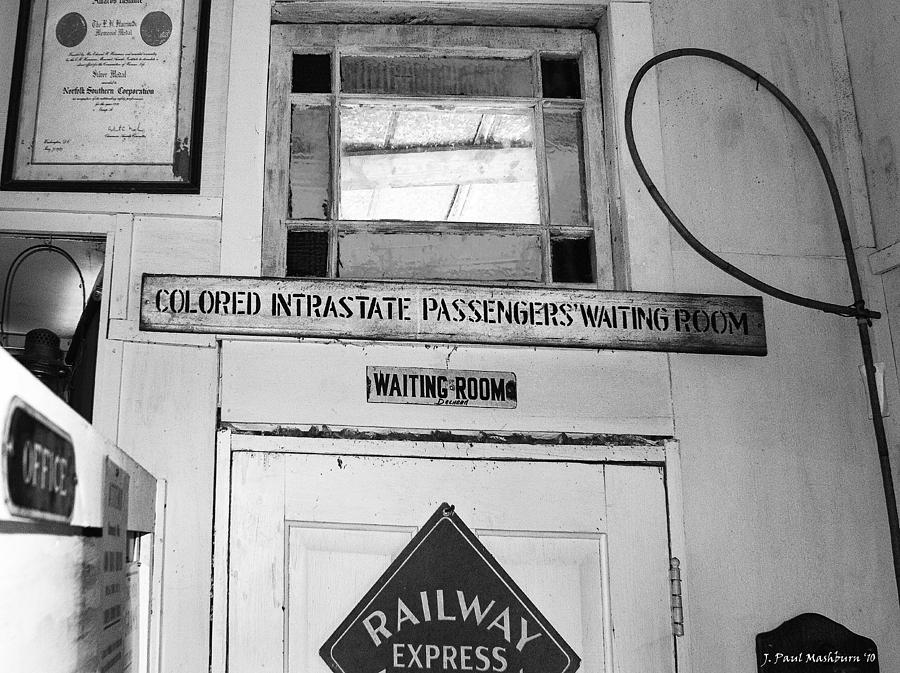
Since we enter a story at its end, sometimes we forget that what is past to us was future to the people whose stories we tell. Too often, what we lose in the telling is what made our subjects’ lives worth living: hope. African American’s visions of the future included equal opportunities and full citizenship, even as white supremacists took control of southern governments in the 1890s and consolidated their power in the first two decades of the twentieth century.
The period from 1890-1920, is often called the “nadir” of African American history, yet African Americans kept hope alive and forged new political weapons during this time. It may be helpful to think of southerners in 1890 as the baby boomers of the nineteenth century. Two decades after the Civil War, the southerners who came into power in that decade had been young during Reconstruction and educated after Emancipation. Members of this generation had not fought in the Civil War; nor had they been enslaved. When they came of political age, the white people were determined to find new solutions to “the Negro Problem,” and their black cohort was just as determined to win its fair share of opportunities and resources.
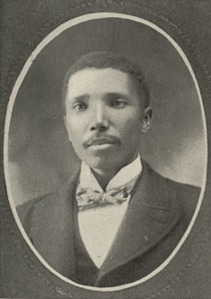
William Frank Fonvielle
In 1893, William Frank Fonvielle, an African American student at Livingstone College in Salisbury, North Carolina, left on a summer road trip through the South. He was editor of his college newspaper and promised to report back to his classmates on racial progress and oppression. His trip came at a crucial moment. Fonvielle believed that black Americans were on the rise, becoming well educated, exercising the vote, and becoming economically self-sufficient. He wasn’t mistaken in those beliefs, but a tide of white supremacy was rising to meet and wash over those accomplishments.2
In the Deep South, Mississippi had ratified a new constitution in 1890. It meant to disfranchise black voters by a literacy test that required a voter to “be able to read any section of the Constitution, or be able to understand the same when read to him, or to give a reasonable interpretation thereof.” It was actually a comprehension test, or as some called it, “an understanding clause.” White registrars would administer the law, and they would decide whether the constitutional interpretations that black voters gave qualified as “reasonable.” The new rules also required payment of a poll tax to be eligible to vote. A court case, Williams v. Mississippi, was already pending to test the law’s constitutionality. Most African Americans believed that the federal courts would never let it to stand.

In addition to wanting to see firsthand a state that would take away his right to vote, Fonvielle wanted to see something else: the new forms of segregation that were springing up across the South in transportation and public space. He had heard that in some southern states the railway stations had separate black and white waiting rooms, and that sometimes the train stopped at the state line so that the conductors could force all of the black passengers in to a separate car. They called this car the Jim Crow car, naming it for a white minstrel who performed in blackface before the Civil War. Jim Crow first become a nickname for African Americans, and then African Americans appropriated it as shorthand for white oppression, disfranchisement, and segregation.3
The year before Fonvielle’s trip, 1892, had been incredibly violent: at least 230 people had been lynched, 69 of them white and 161 black. Fonvielle knew that this was a peak in the bloody record. Almost 1,000 people had been lynched in the past decade.4 Most of the victims were black men, but some were black women. White southerners, particularly in the Deep South, were murdering black people who asserted their rights. The Seaboard Air Line train that Fonvielle boarded in North Carolina quickly crossed the South Carolina line. He hung out the window, eager to see a white man because he had heard that South Carolina was an especially violent place. Soon, one appeared. Fonvielle described him: “He had on but one suspender, a cotton shirt, a frying pan hat, a pair of pantaloons. . . so I sat there and wondered if this tiller of the soil, this specimen of South Carolina manhood had ever helped lynch anybody.”
Fonvielle’s generation of black men and women had poured into the South’s new black educational institutions, many of them, like Livingstone, co-educational. The first generation of African Americans born in freedom embraced education as a civil rights strategy. Since slave states had passed laws making it a crime to teach enslaved people to read and write, many saw education as the way to full citizenship, economic success, and community standing. Black literacy rates rose rapidly, from an estimated 5%-10% under slavery to 50% in 1910. Among black people born after 1860, literacy rates were even higher.5 Moreover, many wanted first-class educations: the kind that white men were getting at the time. For example, Fonvielle had a classical education and read Latin. At the station in Carlisle, South Carolina, he sat reading a brand new best selling novel, when a white man came up to him and asked if he were not afraid to read so many novels. Fonvielle responded that it depended on the novel. The white man, amazed at this educated black man, began to quiz him: Have you read Dickens? Ben Hur? Shakespeare? Fonvielle pulled Shakespeare from his suitcase and offered to lend it to him.
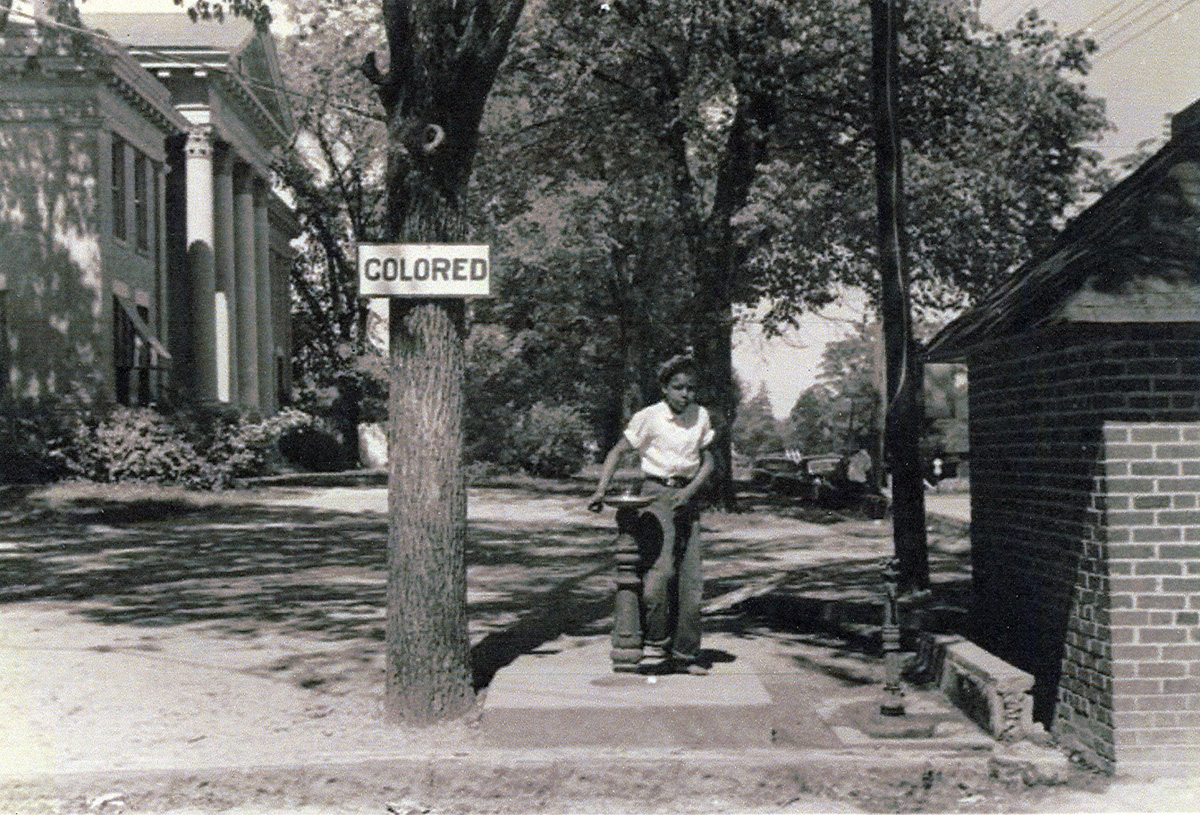
In addition to education, black people came to own 25% of southern acreage by 1900, compared to the 3.8% that they owned in 1880. By 1910, African Americans owned between 16 and 19 million acres.6 Moreover, African Americans started their own businesses and factories. At Union, South Carolina, Fonvielle visited a gigantic cotton mill owned by a black man, which employed both black and white labor. A decade later, no cotton mill in the South would employ African Americans at all.
But by the time he got to Spartanburg, South Carolina, Fonvielle’s education in the new white supremacy began. “When I arrived at Spartanburg—which is a pretty town—I was reminded that I was in the South by the appearance of two sign boards at the station, which told me: ‘This room is for colored people.’ ‘This room is for white people.’ . . . Those signs perplexed me, for I had never seen anything like them before. Then the whole thing burst upon me at once, and I interpreted it to mean: The Negroes must stay in here and not in the other room, and the ‘superior’ civilization goes where it pleases.”
Sleeping all night on the train, Fonvielle woke up in Atlanta at 6:00 a.m. He reported, “Upon first glance, Atlanta reminds one of a Northern city; but a five minutes stay will be sufficient to knock all such silly notions out of your head.” Although Fonvielle was hungry for breakfast, he could not eat in the station restaurant. Atlanta, he told his readers, was a “mean hole . . . chained down with prejudice.” African Americans could not ride on street cars unless they took seats in the back, a policy that sparked a boycott by black riders. Numerous southern cities followed Atlanta’s lead, and numerous protests followed. Nonetheless, in 1893, it was all new to Fonvielle, and he could not believe his eyes. He marveled, “The Negroes are taxed to help keep up the city parks, the council will not permit them nor the dogs to enter.”

The imposition of rigid segregation was gradual: it started in the lower South and moved up to the upper South. Fonvielle was going to meet it. Leaving Atlanta, he had to travel on the Jim Crow car. He asked, “Did you ever see a ‘Jim Crow’ car? If you haven’t, let me describe it to you. . . . It is divided into two compartments. The end next to the baggage car is the ‘Crow’ car . . . the other end is a smoker.” African Americans paid as much to ride as whites, who sat “on cushioned seats.” Black passengers sat amid smoke and coal dust, packed in with luggage. As he toured Montgomery, Mobile, and New Orleans, Fonvielle found Jim Crow everywhere. Shaken by what he saw, still he believed that these ridiculous restrictions would be temporary. As he traveled north into Tennessee, Jim Crow disappeared. “I lay back on the beautiful plush rests, in a nice chair car, . . . [and when I saw] the Smoky Mountains . . . I thought of heaven.”
A decade later, by 1903, the conditions that Fonvielle had observed as curiosities would be institutionalized by law throughout the South, even in his own beloved North Carolina. When Homer Plessy, a black New Orleanian, refused to move to the back of the streetcar, he intended to spark a test case, because he was sure that he would win in court. But in 1896, the Supreme Court ruled in Plessy v. Ferguson that segregation was legal, as long as the accommodation provided for blacks was equal to that provided for whites. That equality was a fiction in practice. The unequal Jim Crow car became the only way that African Americans could travel in the South. Five years later, in 1901, novelist Charles Chesnutt described a trip similar to Fonvielle’s in “A Journey Southward.”
In 1898, the Supreme Court of the United States upheld voting restrictions in Williams v. Mississippi, but other southern states didn’t wait for that endorsement to follow Mississippi’s lead. They variously imposed complicated residential requirements for registering. Some put in a grandfather clause that allowed illiterate whites to vote if their grandfathers had voted. Others enacted a poll tax. Across the region, voter turnout plummeted: roughly one in five people voted, compared to four out of five in Iowa.
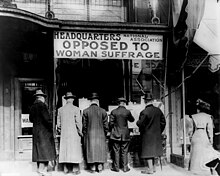
State Disfranchising by Constitutions or Legislation
- Mississippi................1890
- South Carolina..........1895
- Louisiana..................1898
- North Carolina..........1900
- Virginia.....................1902
- Alabama....................1902
- Georgia and Texas...1908
After all of that, if black people persisted in trying to register or vote, white people met them at the polls with racial violence. For example in 1898, a leading white man in Wilmington, North Carolina, proclaimed that he would drive African Americans out of politics, even if he had to “chok[e] the Cape Fear River with the bodies of [N]egroes.”7 After his party lost the election, he made good on his promise and led a mob that shot black citizens down in the streets. Then he fired city officials and seized the mayor’s office for himself. States also amended their constitutions to require segregation; municipalities passed laws that dictated where people could eat, live, walk, and stand.
The imposition of white supremacy and the violence that accompanied it sparked the Great Migration of African Americans to the North after the turn of the century. It became clear to black southerners that the federal government was not going to come to their aid if they remained in the South. A black woman who witnessed the Wilmington massacre wrote to the Attorney General of the United States and begged him to send a boat for their rescue. She asked him, “Is this the land of the free and the home of the brave? How can the Negro sing my country ‘tis of thee?”8 William Frank Fonvielle watched in despair as his own state of North Carolina disfranchised him in a white supremacy campaign fueled the Democratic party newspaper, the Raleigh News and Observer. Fonvielle’s final thoughts survive in the poem he wrote about this time:
“Somewhere.”
Is there a place that hides from sight
Where daytime never turns to night?
Somewhere, somewhere?
There must be, else we could not bear
The pain, the anguish we have here.
Tell me! Tell me! Is it not true?
A place exists where we're made anew,
Somewhere, somewhere?
For two million black southerners, that “somewhere” was in northern cities. Roughly 25% of the South’s black population left in two decades rather than submit to Jim Crow’s dangers.9 They then participated in local and national politics a safe distance from the South in the hopes that some day they would bring national political pressure against Jim Crow back home.
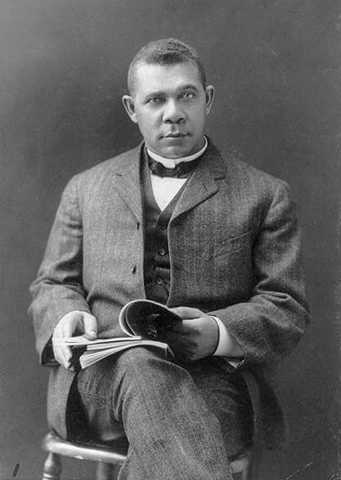
Those African Americans who stayed behind found themselves virtually banished from local elections by 1905, but that didn’t mean that they weren’t political actors. While we tend to think of Booker T. Washington as an accommodationist because he acceded to segregation in his famous Atlanta Exposition Speech, he remained active in national Republican Party politics until his death. He fought against disfranchisement whenever he could, albeit behind the scenes. Washington relinquished the right to a classical education in that speech, but he coupled that concession with the demand that black people be hired in new southern factories. His white listeners heard and heeded only his concessions. Washington had to plot behind the scenes against the spread of white supremacy. His stealthy politics, meant to be invisible to white southerners, earned him the nickname “the Wizard of Tuskegee.”
Washington’s campaign to fight white supremacy involved what he, and historians since, have called “uplift.” If southern African Americans obtained practical educations, they could support themselves and lead sober lives marked by achievement. They would practice “uplift”—or betterment—first for themselves, then for their less fortunate black neighbors. Surely, they hoped, white southerners would recognize their contributions and capabilities. Gradually robust white supremacy would wither. Washington founded the National Negro Business League to promote and publicize black commerce and self-help.
Northern-born black sociologist W. E. B. Du Bois positioned himself as Washington’s opposite. Du Bois had graduated from Fisk University in Tennessee and earned a Ph.D. at Harvard. By 1902, Du Bois believed that Washington had conceded too much. Any man should be able to have a classical education. Moreover, to accept segregation would be to give up all civil rights since accepting separation acknowledged that black people were not equal. Du Bois founded the Niagara Movement in 1905, the forerunner of the National Association for the Advancement of Colored People.
While it works well in the classroom to set Washington and Du Bois against one another in a debate, it is important to understand that they were never really the polar opposites that they (and white journalists) made themselves out to be. Each man’s strategy must be contextualized chronologically and by its applicability to the South or the North. Moreover, African American opinion ranged widely between the two men’s positions.

The Great Migration resulted in a blossoming of black culture in northern and mid-Western cities, and African Americans began to speak of the “New Negro.” He or she was born after slavery, well-educated, independent, and proud of his or her African background. The New Negro saw World War I as the “Great War for civil rights.” When it ended, Du Bois announced: “We return from fighting. We return fighting. Make Way for Democracy.” African Americans had fought “the savage Hun;” now they returned to fight “the treacherous Cracker.” Across the nation, whites met those demands with violence. Twenty-six full-fledged racial massacres occurred in the summer of 1919.10
Many white male politicians and some white southern women fought woman suffrage after World War I because they feared that it would bring African Americans back into the electoral process. One white Congressman who opposed it remarked, “My cook would vote while my wife would not.”11 But many southern white women supported woman suffrage; a very few even supported black women’s right to vote. When the Nineteenth Amendment granting woman suffrage became law in the fall of 1920, black women across the South attempted to register and vote, with varying degrees of success. They acted as a wedge to bring African Americans back into public life.12 After 1919, black and white southerners of both sexes forged tentative coalitions to prevent a recurrence of such violence. Called Commissions on Interracial Cooperation, black and white members worked to put an end to racial massacres and lynching and toward better “race relations.”13

In 1920, virtually all white southerners believed that segregation and white supremacy would last for another thousand years. They thought that they had found a permanent solution to the “race problem.” But their permanent solution barely lasted another decade. By 1933 black southerners began to challenge southern disfranchisement and segregation on the ground, in the courts, and, even at the ballot box in Upper South cities. The federal government finally responded in a limited way to southern poverty and racism with some aspects of the New Deal, and northern black voters began to elect representatives to Congress who spoke for southern African Americans as well. Forty years after Fonvielle tracked the spreading stain of white supremacy across the South, it began to recede ever so slightly. (http://nationalhumanitiescenter.org/tserve/freedom/1865-1917/essays/nadir.htm)

Hi
ReplyDeleteIm trying to trace my family tree, I believe my ancestors are from Wilmington. SC.
Their surname was Rowling and they were slaves , My Grandfather and his brothers came to UK and settled in various parts of england , charles henry my grandfather settled in scotland until his death in 1948.
Is there any way I could search this family through this sie please... thankyou .... Myra Rowling